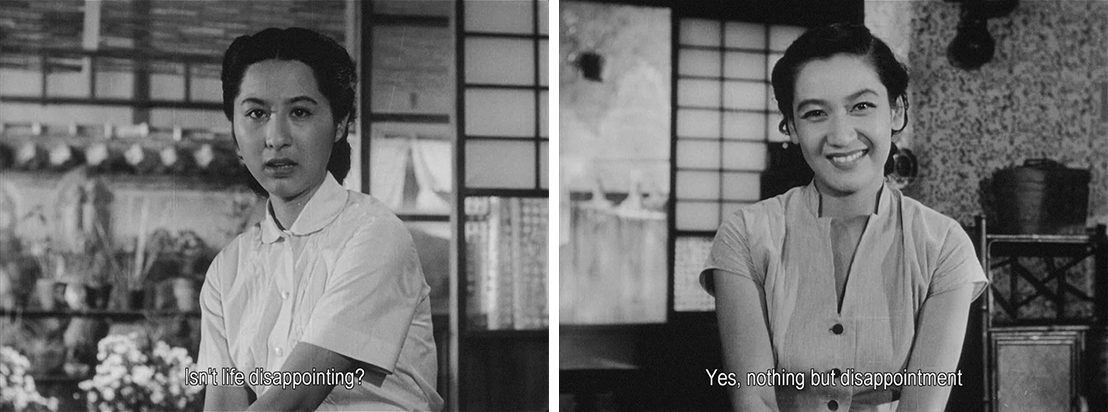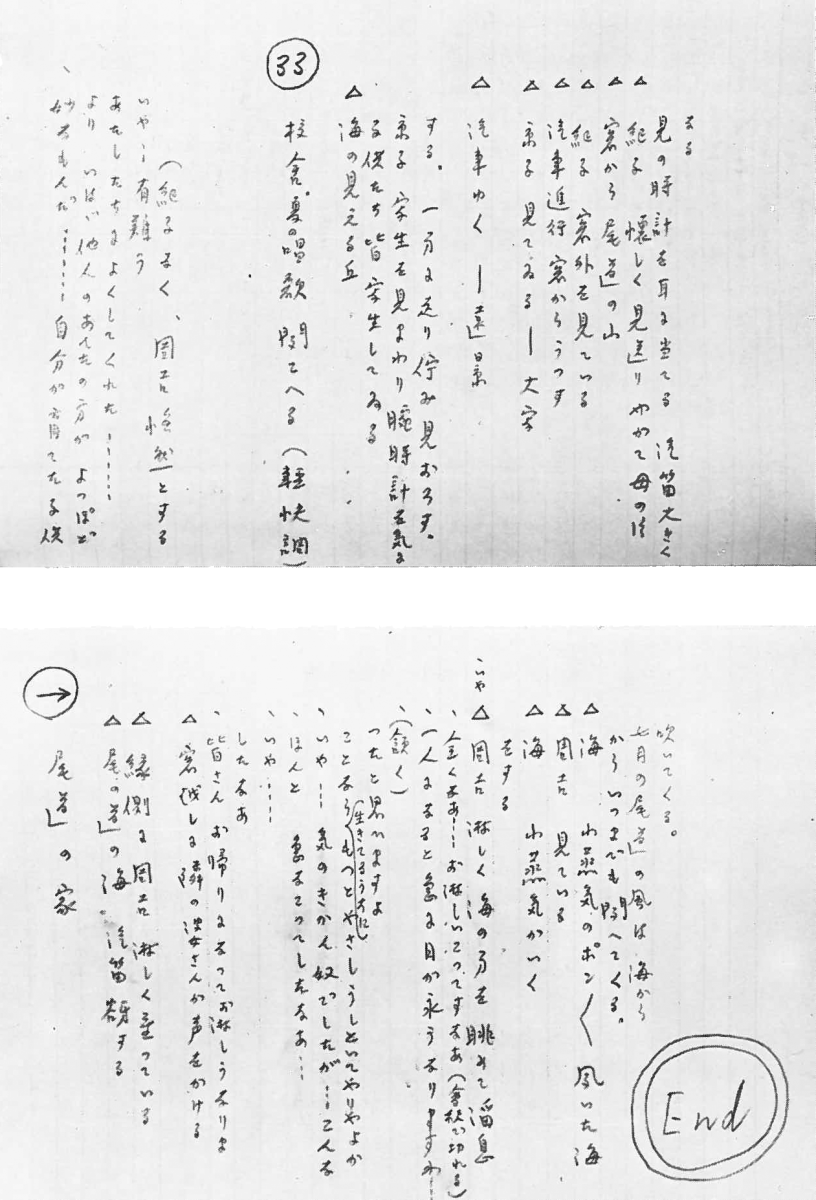
An old couple visit their children and grandchildren in the city, but receive little attention.
“I was still an assistant when I heard him say: ‘Someday, I’m sure, foreigners will understand my films.’ Then he added with a modest smile: ‘Then again, no. They will say, like everybody else, that my films aren’t much of anything.”
Yûharu Atsuta, assistant and cameraman of Yasujirô Ozu1
“The capricious way in which this work entered world film culture might make us suspect that its renown is accidental. Surely Late Spring (1949) and Early Summer (1951), to cite only two examples, are no less excellent. Ozu himself hinted at a reservation: “This is one of my most melodramatic pictures.” But Tokyo Story is in fact a generous introduction to his distinct world. It contains in miniature a great many of the qualities that enchant his admirers and move audiences to tears.”
David Bordwell2
“The film is characteristic in its recycling of earlier material. The rural parent's visit to Tokyo is an Ozu motif that stretches back to Dreams of Youth. The parents' belief that their children are ‘better than average’ echoes that of the old Hirayamas in Early Summer (though here the phrase works more as solace than as accurate judgment). A gag invoving rude children and a lumpy bag is lifted from Early Summer’s bread-kicking scene. In recasting McCarey's Make Way for Tomorrow, which Ozu had not seen but Noda had, Tokyo Story continues Ozu’s 1930s habit of borrow from American cinema. (In addition, the boy Minoru whistles the theme from Stagecoach.) Brothers and Sisters of the Toda Family is another obvious source, evoked in the them of the good siblings and the plot device of shuttling the parents from househould to household. In its generally sombre tone, Tokyo Story is reminiscent of There Was a Father – another film in which Ryu plays an aging father.”
David Bordwell3
“The intention is clear, the technique acts as a bloodletting. The poor means neutralize the images and purge them of all meaning. Ozu: ‘It’s so easy to show emotion in a drama: the actors cry or laugh, and that provides the audience with feelings of sadness or happiness. I want people to feel what life is like without dramatic ups and downs.”
Ozu finds dramatization inauthentic. The cold pathos of his films is directed against Western conventions of representation, in which the hysterical, narcissistic individual sings his own praises and pushes himself to the fore.’
Frieda Grafe4
“The first time that I wrote about Ozu was a long time ago, in 1957. And that is when I think we had the first season of Japanese films at our National Film Theater and where I saw the work of Mr. Ozu for the first time. That was his film Tokyo Story. I wrote a piece on the film in the British Film Institute magazine Sight & Sound. ... Alan Watts, the English writer, said when Professor Suzuki was once asked how it feels to have attained Satori, the zen experience of awakening, he answered ‘just like ordinary everyday experience except about two inches off the ground’. And I called the piece I wrote ‘Two Inches Off the Ground’ because that was the effect which Tokyo Story had on many people in this country and it is now regarded all over the world as a masterpiece. It’s 40 years since Mr. Ozu made Tokyo Story and it’s just over 30 years I think, since he died and he’s made more films in that time. When I saw his film first I did immediately understand it and enjoy it. I knew that Tokyo Story was made by somebody who really understood what life was about, the experience of life in a family, parents and children. Which are of course themes that affect us all. It’s often thought that films get out of date or seem old-fashioned. I don’t really think they do. Particularly not films that are made in the classic and absolutely straightforward spirit of Mr. Ozu. He had great understand and that understanding is still present in his films. It’s an understanding of the life that we all have to lead with an honesty that is constant and also a kind of irony that gives them the right kind of humor without ever being sarcastic. That’s why I think Ozu survives and his work survived as one of the great directors of the cinema.”
Lindsay Anderson5
« Dans la série des films en noir et blanc dont la plupart se déroulent sous un ciel clair, Voyage à Tôkyô est l’oeuvre qui a le mieux fixé l'impression de chaleur constante. La sensibilité plui, mais aucun des personnages n’évoque cette eventualité, acceptant avec naturel la chaleur et un ciel sans nuage. Quand Chishû Ryû, qui vient de perdre sa femme, dit « La journée va encore être chaude » en contemplant le port d’Onomichi, il a l’air de s’en feliciter. Ou plutôt, il semble rassuré de n'avoir pas perdu le monde ozuien. ... Tous les vieux meurent, chez Ozu, un jour de beau temps. Voyage à Tôkyô est une oeuvre d'importance capitale, parce qu'elle a réussi à fixer définitivement ce beau temps. Dans les film en couleurs qui suivent, on ne retrouvera plus cet éclat de l’image. »
Shiguéhiko Hasumi6
“In het Westen wordt het werk van Ozu meestal in verband gebracht met de cultuur waartoe hij behoorde en waarmee hij zonder twijfel een grote affiniteit had: het zenboeddhisme. Volgens de drie meest toonaangevende commentatoren, Donald Richie, Noël Burch en Paul Schrader, draaien de films van Ozu rond een verzoening met het onherroepelijke. (...) Toch is er ook een totaal andere interpretatie van Ozu’s werk mogelijk. We vinden ze onder meer in enkele bijzondere pagina’s uit Gilles Deleuzes studie Cinéma 2. L’image temps en in het onvolprezen boek Ozu van de Japanse cultuurtheoreticus Hasumi Shiguéhiko. In de interpretatie van Deleuze en Hasumi is Ozu niet langer slechts een regisseur van de leegte of de reductie, en wil hij ons niet zonder meer aanmanen tot de aanvaarding van onze eindigheid. Volgens hen is het er Ozu allerminst om te doen verschillen uit te wissen maar wil hij ze net zichtbaar maken. Ozu wordt namelijk geacht te tonen hoe elke mens, elk ding en elke gebeurtenis gekenmerkt wordt door een heel eigen manier van zijn. Bij hem wordt duidelijk dat elk gegeven verschijnsel wezenlijk anders is dan elk ander verschijnsel.”
Stéphane Symons7

Excerpt from the written script of Tokyo Story:

- 1cited in: David Bordwell, Ozu and the Poetics of Cinema (Princeton: Princeton University Press, 1988).
- 2David Bordwell, “Tokyo Story: Compassionate Detachment,” Current, 18 November 2013.
- 3David Bordwell, Ozu and the Poetics of Cinema (Princeton: Princeton University Press, 1988).
- 4Frieda Grafe, “How to Orient Yourself in Ozu Films,” translated by Sis Matthé, Sabzian, 2 February 2022.
- 5Lindsday Anderson interviewed in Talking with Ozu (Kogi Tanaka, 1993). Clip on YouTube.
- 6Shiguéhiko Hasumi, Yasujirô Ozu (Paris : Cahiers du Cinéma, 1998.
- 7Stéphane Symons, “Twee keer Ozu,” Sabzian, 23 februari 2022.

